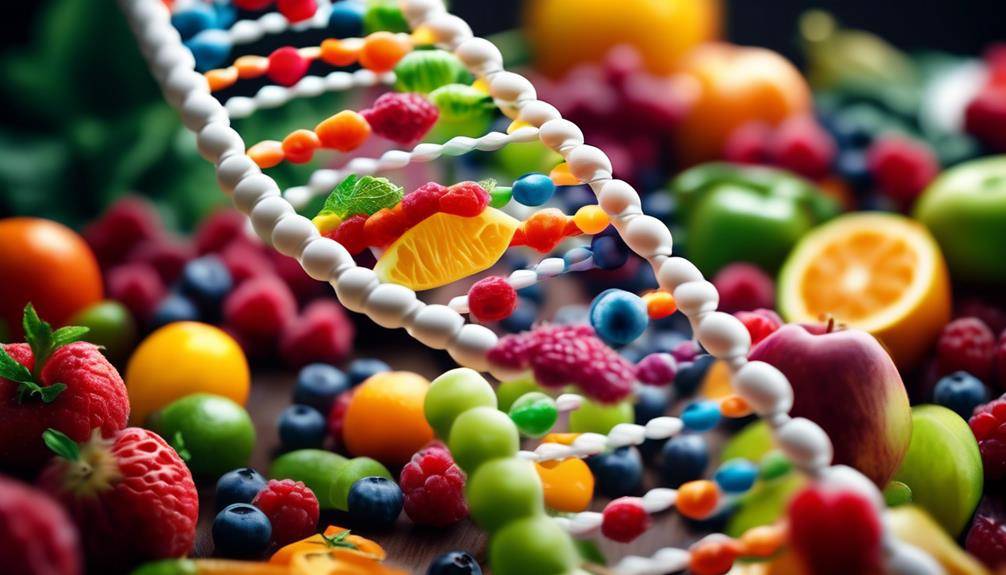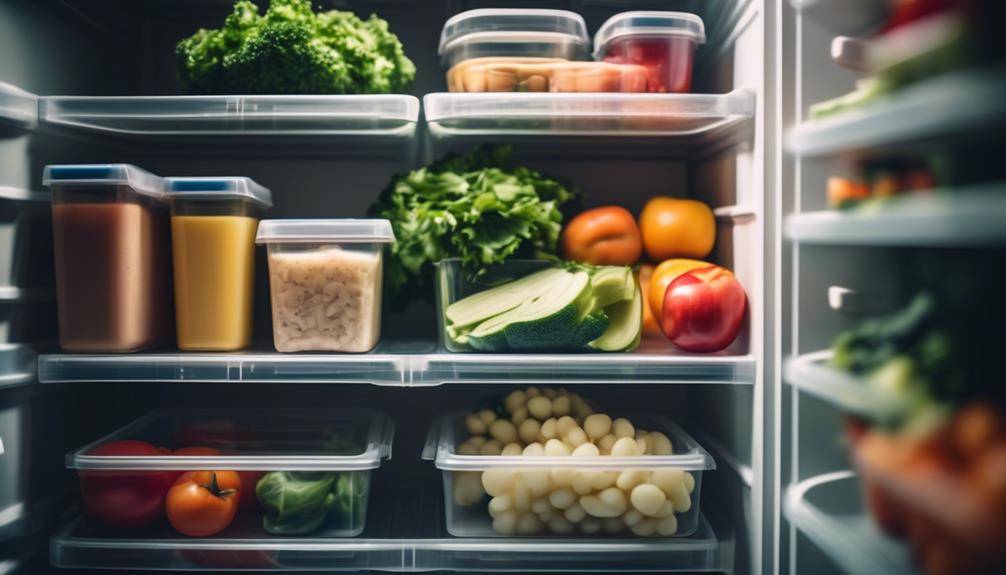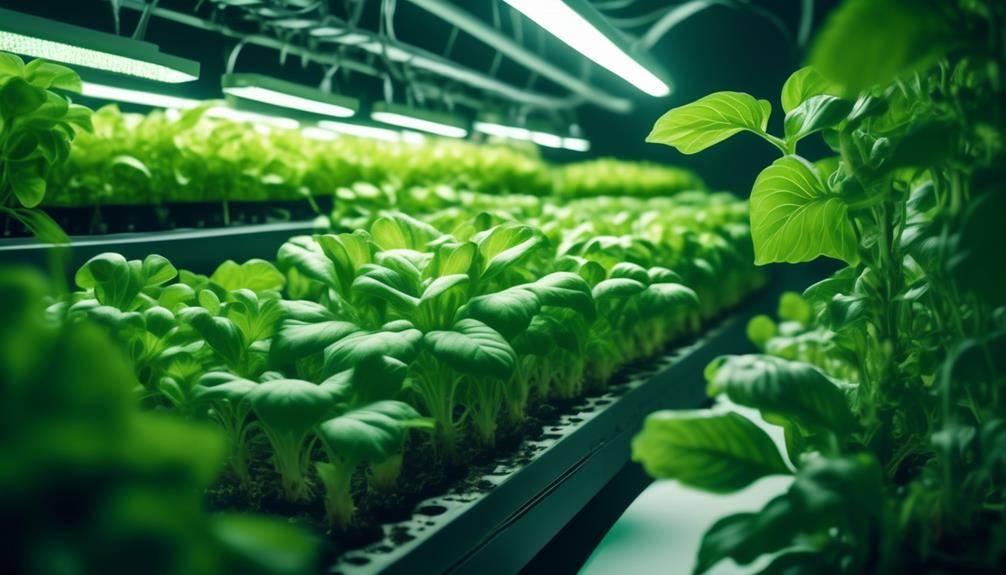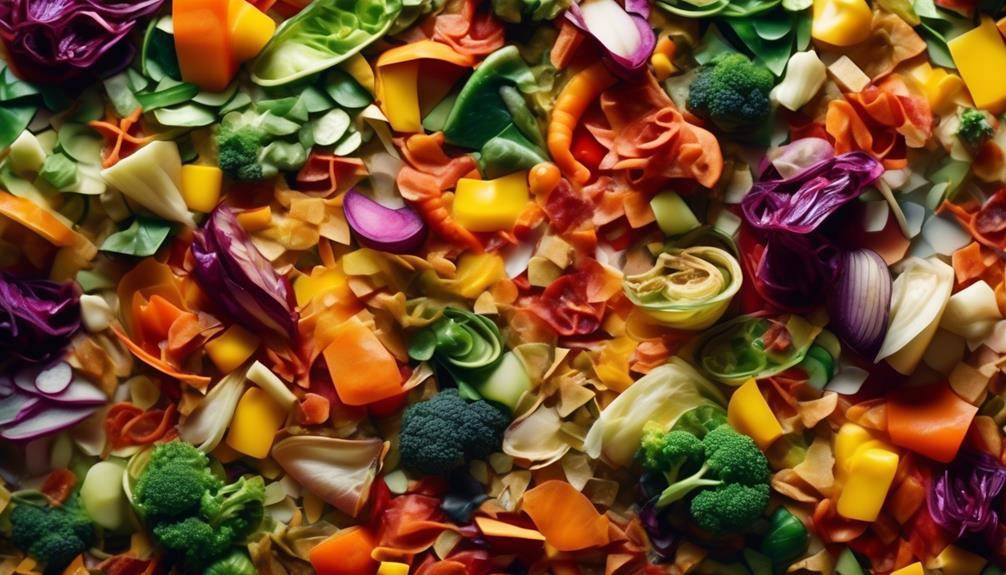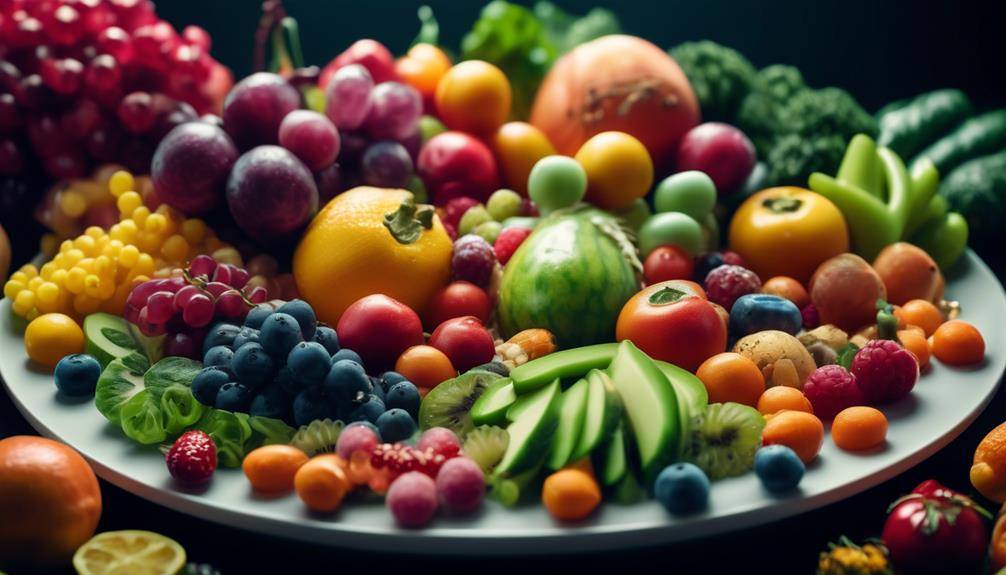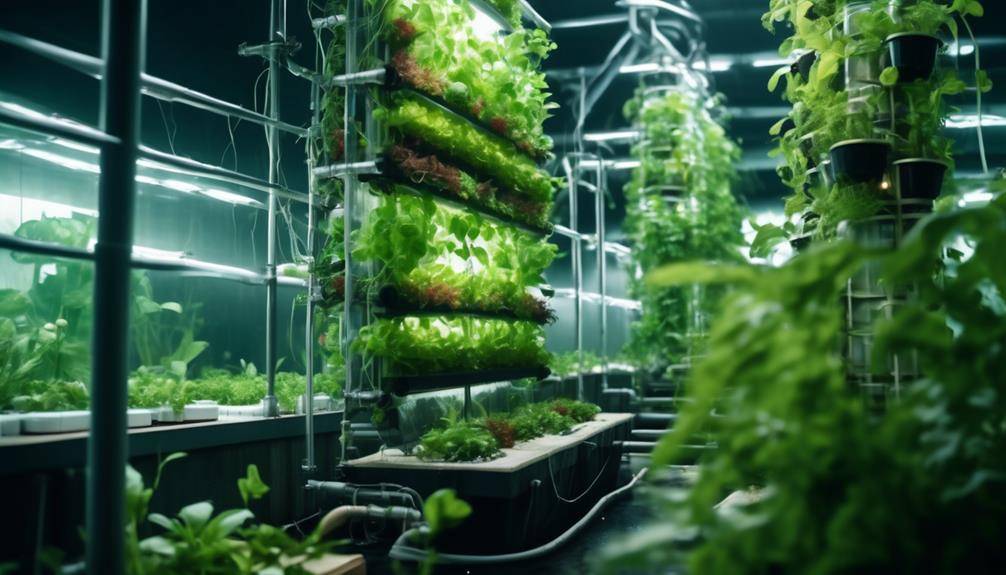The Best Cost-Effective Aquaponics Systems For Farming
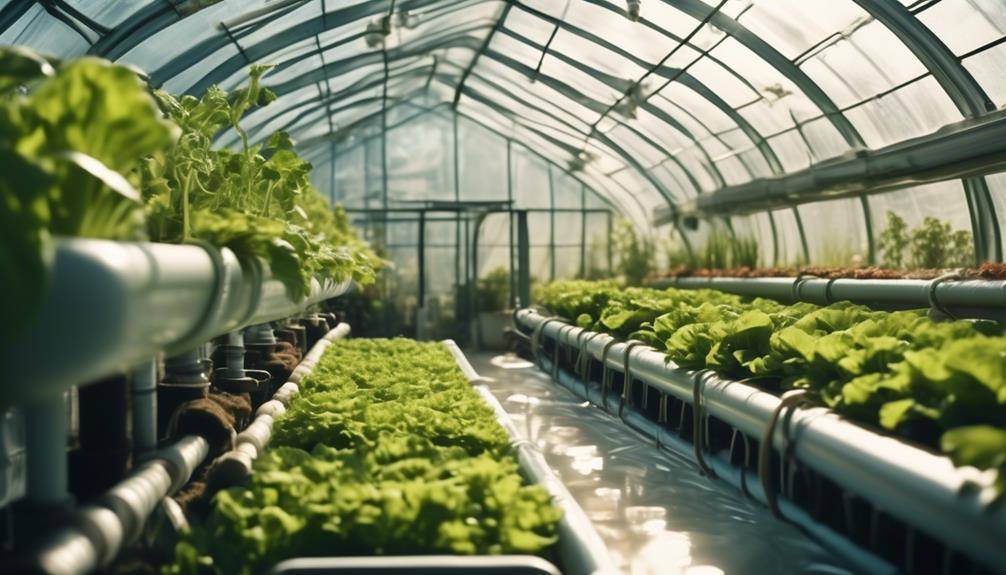
Cost-Effective Aquaponics Systems; Are you looking for a way to maximize your farming efficiency while minimizing your costs? If so, then cost-effective aquaponics systems may be the solution you’ve been seeking. In this discussion, we will explore the benefits of aquaponics systems, different types available, and how to choose the right fish and plants for your system. Additionally, we will delve into the essential components of an aquaponics system, maintenance and operation tips that can save you money, and troubleshooting common issues that may arise. Stay tuned to discover how you can scale up your aquaponics system and learn from real-life success stories of aquaponics farms.
Benefits of Aquaponics Systems
Aquaponics systems offer a multitude of benefits, making them an efficient and sustainable farming method for both small-scale growers and commercial operations. One of the key advantages of aquaponics is its contribution to sustainable farming. By combining aquaculture and hydroponics, aquaponics minimizes water usage compared to traditional soil-based agriculture. It is estimated that aquaponics uses 90% less water than traditional farming methods. This reduction in water usage not only conserves a precious resource but also helps to reduce the strain on local water supplies.
Furthermore, aquaponics eliminates the need for chemical fertilizers and pesticides. The fish waste produced in the aquaculture component of the system serves as a natural source of nutrients for the plants. This closed-loop system reduces the risk of water pollution and soil contamination, making aquaponics an environmentally friendly farming method.
In addition to its sustainable aspects, aquaponics also offers significant economic advantages. The production costs of aquaponics systems are relatively low compared to traditional farming methods. The elimination of chemical fertilizers and pesticides reduces input costs, while the efficient use of water and space increases productivity. Moreover, aquaponics allows for year-round production, providing a consistent supply of fresh produce regardless of seasonal limitations. This consistent production can lead to increased market opportunities and higher profitability for growers.
Types of Aquaponics Systems
When it comes to aquaponics systems, there are several factors to consider. First, the size of the system can vary depending on available space and desired output. Second, equipment requirements will differ based on the size and complexity of the system. Finally, maintenance and upkeep are crucial for ensuring the proper functioning of the system and the health of the plants and fish. By understanding these key points, you can make informed decisions when selecting and managing an aquaponics system.
System Size Options
There are various options available for the size of aquaponics systems, each offering different advantages and considerations. When choosing a system size, it is important to consider your space requirements. If you have limited space, a small-scale aquaponics system might be the best option. These systems typically occupy a small footprint and can be set up indoors or in a backyard. They are ideal for individuals or small-scale farmers who want to grow vegetables and fish for personal use or for local markets.
On the other hand, if you have ample space, a larger-scale aquaponics system can be more suitable. These systems can support higher yields and can be used for commercial purposes. However, they require more space and investment in infrastructure. It is important to carefully evaluate your space constraints and goals before deciding on the size of your aquaponics system.
Equipment Requirements
To ensure efficient and effective aquaponics systems, it is essential to consider the specific equipment requirements for each type of system. Proper equipment selection is crucial for achieving optimal results while keeping costs in check. Here are four key factors to consider when analyzing the equipment requirements for aquaponics systems:
- Tank System: The size and type of tanks needed will depend on the scale and goals of your aquaponics system. Factors such as water volume, fish species, and desired plant production will determine the tank size and material.
- Filtration System: A robust filtration system is vital to maintain water quality and ensure the health of both fish and plants. Consider factors such as mechanical filtration, biological filtration, and nutrient removal methods when selecting the appropriate filtration equipment.
- Grow Beds: The choice of grow beds will depend on the type of plants you plan to grow and the available space. Factors such as growing media, drainage, and irrigation should be considered when selecting the right grow beds for your system.
- Pumps and Aeration: Proper water circulation and aeration are crucial for maintaining oxygen levels and promoting healthy fish and plant growth. Select pumps and aeration systems that meet the specific requirements of your aquaponics system.
Maintenance and Upkeep
Maintaining and keeping up with different types of aquaponics systems requires regular monitoring and adjustments to ensure optimal functioning. Implementing cost-saving techniques and reducing energy consumption can help make aquaponics systems more efficient and sustainable. One way to reduce energy consumption is by using energy-efficient pumps and aerators, which can significantly lower the overall electricity usage. Additionally, implementing a system for rainwater harvesting can reduce the reliance on municipal water sources, saving both water and money.
Regularly monitoring water quality parameters such as pH, ammonia, and nitrate levels is crucial to ensure the health of the fish and plants. Implementing automatic monitoring systems can streamline this process and provide real-time data for quick adjustments. Regular cleaning and maintenance of the system, including removing debris and maintaining proper water flow, are essential to prevent clogs and ensure optimal performance. By incorporating these maintenance and cost-saving techniques, aquaponics systems can become more efficient and economically viable.
Choosing the Right Fish for Your System
What factors should you consider when choosing the right fish for your aquaponics system?
When selecting the ideal fish species for your aquaponics system, it’s crucial to consider fish compatibility and other factors that can impact the success of your setup. Here are four key considerations to keep in mind:
- Water temperature requirements: Different fish species have varying temperature preferences. It’s important to choose fish that can thrive in the water temperature range that your system can consistently maintain. This ensures optimal growth and health for both the fish and plants in your aquaponics system.
- Nutritional needs: Each fish species has unique dietary requirements. It’s essential to select fish that can be easily fed with the available resources in your system. Additionally, consider the nutritional value of the fish waste produced, as it will contribute to the nutrient supply for your plants.
- Growth rate and size: Some fish species grow faster than others. If you’re looking for quicker harvests, choose fish that have a shorter growth cycle. Additionally, consider the maximum size the fish can reach, as it affects the stocking density and overall system balance.
- Environmental impact: Consider the potential environmental impact of the fish species you choose. Avoid selecting invasive species that could escape into the local ecosystem and disrupt native wildlife. Opt for fish that are suitable for aquaponics and have a low risk of causing harm to the environment.
Selecting the Ideal Plants for Aquaponics
When selecting plants for your aquaponics system, there are several factors to consider. First, choose plants that are well-suited to the conditions of your system, such as the water temperature and pH levels. Additionally, consider the nutritional needs of the plants and how they will interact with the fish waste in the system. By carefully selecting the ideal plants for your aquaponics system, you can ensure optimal growth and a thriving ecosystem.
Plant Selection Tips
To ensure successful plant growth in aquaponics systems, it is crucial to carefully select the ideal plants based on their compatibility with the aquatic environment and nutrient requirements. Here are some plant selection tips for aquaponics:
- Choose plants that have low nutrient requirements: Aquaponics systems rely on the waste produced by fish to provide nutrients to the plants. Therefore, it is important to select plants that don’t require high levels of nutrients.
- Consider the pH requirements: Different plants have different pH preferences. Make sure to select plants that can thrive in the pH range of your aquaponics system.
- Opt for fast-growing plants: Since aquaponics systems are highly efficient in nutrient delivery, choosing fast-growing plants will maximize your yield.
- Select plants with shallow root systems: Aquaponics systems typically use grow beds with limited depth. Selecting plants with shallow root systems will ensure they can absorb nutrients efficiently.
Best Aquaponic Plants
When selecting the ideal plants for your aquaponics system, it is important to consider their compatibility with the aquatic environment and nutrient requirements, ensuring successful plant growth. There are several popular aquaponic plants that can thrive in this system and provide various benefits. Leafy greens such as lettuce, spinach, and kale are excellent choices for aquaponics due to their high nutrient content and rapid growth. These vegetables are rich in vitamins and minerals, making them highly nutritious.
Additionally, herbs like basil, mint, and cilantro can be grown in aquaponics, providing fresh flavors for culinary purposes. These plants not only enhance the aesthetics of your system but also contribute to the overall sustainability of your aquaponic setup. By growing these aquaponic vegetables, you can enjoy the benefits of fresh and organic produce while maximizing your system’s efficiency.
Essential Components of an Aquaponics System
One of the most critical components in an aquaponics system is the fish tank. This is where the fish are housed and play a vital role in the overall functioning of the system. Here are four essential components that should be included in an aquaponics system:
- Fish Tank: The fish tank is the heart of the system, where the fish live and produce waste. The size of the tank depends on the number and size of fish you plan to raise. It should be large enough to accommodate the fish comfortably and allow for proper water circulation.
- Grow Bed: The grow bed is where the plants are grown. It is usually filled with a media, such as gravel or clay pellets, which provides support for the plants and acts as a biofilter. The water from the fish tank is pumped into the grow bed, providing nutrients for the plants as it passes through the media.
- Water Pump: A water pump is essential for circulating water between the fish tank and the grow bed. It ensures that the plants receive a constant supply of nutrient-rich water and that the fish tank remains oxygenated.
- Aeration System: Proper oxygenation of the water is crucial for the health of the fish and the plants. An aeration system, such as an air pump and diffuser, helps to maintain oxygen levels in the fish tank and prevent the water from becoming stagnant.
These components work together to create a balanced and sustainable aquaponics system. By providing the necessary equipment and maintaining optimal conditions, you can ensure the success of your aquaponics venture.
Design Considerations for Cost-Effective Systems
When designing cost-effective aquaponics systems, there are two key considerations: system size and layout, and material and equipment selection. The size and layout of the system should be optimized to maximize productivity while minimizing costs. This includes determining the number and size of grow beds, fish tanks, and other components based on the desired production capacity and available space. Additionally, careful selection of materials and equipment is crucial to ensure durability, efficiency, and affordability. Choosing cost-effective materials and equipment that meet the specific needs of the system can significantly impact the overall cost and long-term success of the aquaponics operation.
System Size and Layout
Are you looking for cost-effective design considerations for aquaponics systems? When it comes to system size and layout, there are a few key factors to consider to ensure system scalability and space optimization. Here are some points to keep in mind:
- Scale of Production: Determine the size of your system based on the desired production capacity and available space.
- Layout Efficiency: Design your system to minimize wasted space and maximize productivity by utilizing vertical growing methods or incorporating multiple levels.
- Space Allocation: Allocate space for both the aquaculture and hydroponic components, ensuring adequate room for fish tanks, grow beds, and plumbing systems.
- Accessibility: Plan for easy access to all components for maintenance, harvesting, and monitoring purposes.
Material and Equipment Selection
To design a cost-effective aquaponics system, carefully consider the selection of materials and equipment for optimal efficiency and productivity. When it comes to material selection, it is important to choose materials that are durable, long-lasting, and resistant to corrosion. For example, using high-quality food-grade plastic tanks for fish rearing and grow beds can be a cost-effective choice.
These tanks are lightweight, easy to clean, and have a long lifespan. Additionally, selecting equipment with high efficiency is crucial to maximize productivity while minimizing energy consumption. Look for energy-efficient pumps, aerators, and filtration systems to reduce operational costs. Investing in equipment with adjustable settings can also help optimize performance and adapt to different system requirements. By carefully selecting materials and equipment, you can create a cost-effective aquaponics system that delivers efficient and productive results.
Water Management and Filtration Techniques
Proper water management and filtration techniques play a crucial role in the success of aquaponics systems for farming. By effectively managing water and implementing appropriate filtration techniques, you can optimize nutrient levels and ensure a healthy environment for your plants and fish. Here are some key techniques to consider:
- Biological Filtration: Utilizing biofilters can help remove harmful substances and maintain water quality. These filters use beneficial bacteria to convert toxic ammonia into less harmful nitrate, which can be used as a nutrient by the plants.
- Mechanical Filtration: Incorporating mechanical filters, such as screens or mesh, can help remove solid waste and debris from the water. This prevents clogs and ensures proper water flow throughout the system.
- Chemical Filtration: Adding activated carbon or other chemical filtration media can help remove impurities, toxins, and excess nutrients from the water. This promotes a balanced nutrient level and prevents nutrient buildup, which can be harmful to both plants and fish.
- Water Monitoring: Regularly testing the water parameters, such as pH, ammonia levels, nitrate levels, and dissolved oxygen, is essential for maintaining a healthy aquaponics system. Monitoring these parameters allows you to make necessary adjustments and prevents any potential issues before they become severe.
Implementing these water management and filtration techniques will not only ensure the well-being of your aquaponics system but also improve the overall productivity and efficiency of your farming operation. Remember to regularly clean and maintain your filtration systems to prevent clogs and maintain optimal water quality. By staying proactive and attentive to your water management, you can create a thriving aquaponics system that produces high-quality crops and fish while minimizing the risk of disease or nutrient imbalances.
Nutrient Cycling and Balancing in Aquaponics
By maintaining proper water management and filtration techniques, you can ensure a healthy environment for your plants and fish while also facilitating nutrient cycling and balancing in aquaponics. Nutrient cycling is a crucial aspect of aquaponics system design as it helps optimize nutrient levels for plant growth and fish health. In aquaponics, the waste produced by fish is broken down by beneficial bacteria into forms that can be readily absorbed by plants. This process, known as mineralization, releases essential nutrients such as nitrogen, phosphorus, and potassium into the water.
To achieve effective nutrient cycling, it is important to maintain a balanced system. This involves monitoring and adjusting nutrient levels to meet the specific requirements of your plants. Regular water testing can help you determine the nutrient levels in your system and identify any imbalances. Adjustments can be made by adding or removing fish waste, adjusting the feed input, or incorporating additional mineral supplements.
In addition to nutrient cycling, it is also important to consider the role of filtration in maintaining water quality and nutrient balance. Proper filtration helps remove solid waste and excess nutrients, preventing the build-up of harmful substances in the system. Mechanical filters such as settling tanks or drum filters can be used to remove solid waste, while biological filters such as biofilters or media beds help convert harmful substances into less toxic forms.
Maximizing Productivity in Aquaponics Farming
In order to achieve maximum productivity in aquaponics farming, it is essential to optimize the growth conditions for both plants and fish. By maximizing efficiency and reducing costs, you can increase the output of your aquaponics system. Here are some practical tips to help you achieve this goal:
- Maintain optimal water quality: Regularly monitor and adjust the pH, temperature, and nutrient levels in your system. This will ensure that both the plants and fish have the ideal conditions for growth. Poor water quality can lead to stunted plant growth and increased disease susceptibility in fish.
- Select suitable plant and fish species: Choose plants and fish that are well-suited to your local climate and water conditions. This will increase their resilience and reduce the need for costly interventions such as heating or cooling systems. Additionally, select plants that have high market demand to maximize your profits.
- Implement proper feeding and nutrient management: Feed your fish with high-quality, nutritionally balanced feed to promote their growth and health. Avoid overfeeding, as excess uneaten food can lead to water quality issues and increased costs. Additionally, ensure that the nutrients produced by the fish waste are efficiently utilized by the plants, either through filtration or biofiltration systems.
- Optimize system design and layout: Design your aquaponics system in a way that maximizes space utilization and minimizes energy and water consumption. Consider using vertical farming techniques or incorporating energy-efficient technologies such as LED lighting. This will help you reduce operational costs and maximize the productivity of your system.
Cost-Effective Maintenance and Operation Tips
To achieve cost-effective maintenance and operation in your aquaponics system, it is crucial to implement efficient strategies that optimize resource utilization and minimize expenses. By adopting cost-saving strategies and reducing operational expenses, you can ensure the long-term sustainability and profitability of your aquaponics farm.
One effective way to reduce operational expenses is by implementing energy-saving measures. Consider investing in energy-efficient equipment, such as LED lights for plant growth and efficient pumps for water circulation. Additionally, optimizing the system’s temperature and humidity levels can help minimize energy consumption. By monitoring and adjusting these factors, you can ensure that your system operates at its most efficient level, reducing unnecessary costs.
Another cost-saving strategy is to minimize water usage. Implementing water-saving techniques like drip irrigation or using rainwater collection systems can significantly reduce your water consumption. Additionally, using a recirculating system that filters and reuses water can help minimize the need for fresh water intake, further reducing operational expenses.
Regular maintenance is essential for the smooth operation of your aquaponics system. By conducting routine inspections and promptly addressing any issues, you can prevent potential problems from escalating and requiring costly repairs. Regularly check the system’s pumps, filters, and pipes for any signs of wear or damage. Additionally, monitor the water quality parameters to ensure optimal conditions for the fish and plants. By taking proactive measures to maintain your system, you can extend its lifespan and avoid unnecessary expenses.
Troubleshooting Common Aquaponics Issues
To maintain the cost-effective operation of your aquaponics system, it is essential to be able to troubleshoot common issues that can arise. By addressing these issues promptly and effectively, you can ensure the continued success of your aquaponics system and maximize your yields. Here are some common issues in aquaponics and how to troubleshoot them:
- Water quality problems: Poor water quality can lead to various issues in your aquaponics system, such as nutrient deficiencies, fish health problems, or plant growth stunting. To troubleshoot water quality problems, regularly test the water for pH, ammonia, nitrite, and nitrate levels. Adjust the pH if needed, ensure proper filtration and aeration, and monitor the fish feeding to prevent overloading the system with excess nutrients.
- Clogging or blockages: Clogging or blockages in the system can disrupt the flow of water and nutrients, leading to poor plant growth or even system failure. Inspect the pipes, filters, and grow beds regularly to check for any blockages. Clean or replace filters as needed, and ensure proper maintenance of the system components to prevent clogging issues.
- Pest infestations: Pests like aphids, snails, or algae can harm your plants and disrupt the balance of your aquaponics system. Implement integrated pest management techniques, such as introducing beneficial insects or using organic pest control methods. Regularly monitor your plants for signs of pests and take appropriate action to prevent infestations from spreading.
- Temperature fluctuations: Fluctuations in temperature can stress both the fish and the plants in your aquaponics system. Monitor and regulate the temperature of the water to ensure it stays within the optimal range for your species of fish and plants. Use insulation or shading to protect the system from extreme temperatures, and consider implementing a backup heating or cooling system to maintain stable conditions.
Scaling Up: Expanding Your Aquaponics System
Expanding your aquaponics system can be a strategic move to increase productivity and maximize the potential of your farming operation. When considering scaling up, it is crucial to explore vertical expansion as a means of optimizing production. Vertical expansion involves adding additional levels or tiers to your existing aquaponics system, allowing you to grow more plants and raise more fish within the same footprint.
One key advantage of expanding vertically is the ability to increase the overall production capacity of your system without acquiring additional land. By utilizing vertical space efficiently, you can significantly boost your output and generate higher yields. This is particularly valuable in situations where land availability is limited or expensive.
To successfully expand your aquaponics system vertically, you need to consider a few critical factors. Firstly, ensure that the structure supporting the additional levels is sturdy and can bear the weight of the added components. Additionally, you must ensure that the lighting and nutrient distribution systems are adequately designed to cater to the increased number of plants. It is also crucial to maintain a balance between the number of fish and the available filtration and biofiltration capacity to prevent any negative impacts on water quality.
Expanding your aquaponics system vertically not only allows you to optimize production but also offers several other benefits. It enhances resource efficiency by maximizing the utilization of available space, minimizes water and nutrient wastage, and provides a more controlled environment for plant growth. By strategically scaling up your aquaponics system, you can take your farming operation to new heights of productivity and profitability.
Case Studies: Successful Aquaponics Farms
Aquaponics farms have proven to be successful models for sustainable and efficient farming practices. By implementing cost-effective strategies, these farms have achieved impressive results. Here are some successful case studies that highlight the effectiveness of aquaponics:
- Urban Organics: This aquaponics farm in St. Paul, Minnesota, has successfully integrated commercial-scale aquaponics into an urban environment. It utilizes a closed-loop system that combines fish farming with hydroponic plant cultivation. By maximizing space utilization and minimizing water and nutrient waste, Urban Organics has achieved high crop yields and reduced operational costs.
- Ouroboros Farms: Located in Half Moon Bay, California, Ouroboros Farms is one of the largest aquaponics farms in the United States. They have implemented a scalable system that combines aquaculture and hydroponics to produce a variety of vegetables and fish. By using efficient water recirculation and nutrient cycling, Ouroboros Farms has achieved impressive productivity while minimizing resource consumption.
- Green Relief: This aquaponics farm in Ontario, Canada, specializes in medicinal cannabis cultivation. By using aquaponics, Green Relief is able to produce high-quality cannabis while reducing water usage compared to traditional soil-based methods. The closed-loop system ensures efficient nutrient cycling and eliminates the need for synthetic fertilizers, making it a sustainable and environmentally friendly option.
- Growing Power: Based in Milwaukee, Wisconsin, Growing Power is a renowned urban farm that has embraced aquaponics as part of its sustainable farming practices. By utilizing waste streams from local businesses and implementing efficient aquaponic systems, Growing Power has been able to produce fresh vegetables and fish while minimizing costs and environmental impact.
These case studies demonstrate the potential of aquaponics as a cost-effective and sustainable farming practice. By leveraging the symbiotic relationship between fish and plants, aquaponics farms can achieve high yields, reduce resource consumption, and contribute to a more resilient and environmentally friendly food system.
Cost-Effective Aquaponics Systems; Frequently Asked Questions
What Are the Potential Challenges or Drawbacks of Using Aquaponics Systems for Farming?
Using aquaponics systems for farming can present potential challenges and drawbacks. These may include the need for specialized knowledge and skills, high initial setup costs, and ongoing maintenance requirements.
Are There Any Specific Regulations or Permits Required for Setting up an Aquaponics System?
Before setting up an aquaponics system, it’s crucial to be aware of the specific regulations and permits required. These ensure the safe and legal operation of aquaponics systems in farming.
How Long Does It Typically Take for an Aquaponics System to Become Fully Functional and Productive?
Typically, it takes several months for an aquaponics system to become fully functional and productive. The setup time can vary depending on factors such as system size, water quality, and fish and plant selection.
Can Aquaponics Systems Be Used in All Climates and Geographical Regions?
Aquaponics systems can be used in all climates and geographical regions, providing numerous advantages and benefits. They allow for year-round production, reduce water usage, and offer a sustainable and cost-effective solution for farming.
Are There Any Limitations or Restrictions on the Types of Plants That Can Be Grown in Aquaponics Systems?
There might be limitations or restrictions on the types of plants suitable for aquaponics systems. Factors like pH levels, nutrient requirements, and space availability can determine which plants thrive best in this farming method.
Conclusion
In conclusion, aquaponics systems offer a cost-effective and efficient solution for farming. By combining aquaculture and hydroponics, these systems provide numerous benefits such as increased crop yields, reduced water usage, and improved nutrient recycling. Selecting the right fish and plants, as well as maintaining and troubleshooting the system, are crucial for successful operation. With proper planning and implementation, aquaponics farms have the potential to thrive and contribute to sustainable agriculture practices.



